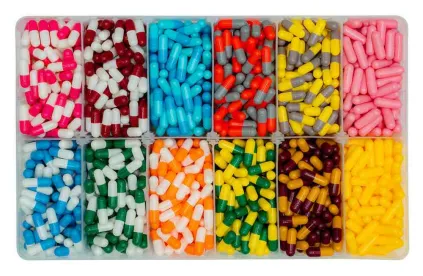The USPTO will be hosting a “public listening session” on January 19, 2023, focusing on USPTO-FDA collaboration initiatives proposed pursuant to President Biden's Executive Order on “Promoting Competition in the American Economy” to “promote greater access to medicines for American families.” The listening session will be held a few days before public comments are due on the USPTO’s “proposed initiatives directed at bolstering the robustness and reliability of patents,” which were issued pursuant to the same Executive Order.
As I wrote in my article on the proposed “robustness and reliability” initiatives, the USPTO is under pressure from Congress to address perceived problems with patents on pharmaceutical products. Stakeholders should not miss these opportunities to help the USPTO address Congressional concerns without undermining the U.S. patent system’s strong history of promoting innovation and competition.
USPTO-FDA Collaboration Discussion Topics
The Federal Register Notice announcing the public listening session outlines the following possible discussion topics.
1. What publicly available FDA resources should be included when training USPTO patent examiners on tools they can use to assess the patentability of claimed inventions?
2. What mechanisms could assist patent examiners in determining whether patent applicants or patent owners have submitted inconsistent statements to the USPTO and the FDA? Please explain whether such mechanisms present confidentiality concerns and, if so, how those concerns could be addressed.
See also the July 29, 2022 Federal Register Notice on “Duties of Disclosure and Reasonable Inquiry During Examination, Reexamination, and Reissue, and for Proceedings Before the Patent Trial and Appeal Board.”
3. What are the opportunities and challenges related to the use of AIA proceedings to address the patentability of claims in pharmaceutical and biotechnological patents, including with respect to how such proceedings may intersect with Hatch-Waxman paragraph IV disputes and the Biologics Price Competition and Innovation Act “patent dance” framework that biosimilar applicants and reference product sponsors use to address any patent infringement concerns?
According to USPTO statistics, as of June 2021 only 4% of all AIA trials challenged Orange Book-listed patents.
4. How can the USPTO and the FDA reinforce their collaboration and information exchange in relation to determining whether a patent qualifies for a patent term extension (PTE) and the length of any extension under 35 U.S.C. 156 …?
5. The FDA already publishes PTE applications on www.regulations.gov, and the USPTO publishes PTE applications on its Patent Center portal …. The USPTO also recently provided centralized access to a listing of PTE applications filed during the last five years. What additional information would be useful to include on this web page?
The list of PTE applications includes PTE applications filed as recently as August 10, 2022. It will be interesting to see how frequently it is updated. The list also includes applications that have been granted.
6. What policy considerations or concerns should the USPTO and the FDA explore as they relate to method of use patents and, as applicable, associated FDA use codes, including with respect to generic drug, 505(b)(2), and biosimilar applicants who do not seek approval for (i.e., who seek to carve out from their labeling) information related to a patent-protected method of use (sometimes described as “skinny labeling”)?
Perhaps the USPTO is referring to patents like these.
7. What policy considerations or concerns should the USPTO and the FDA explore in relation to the patenting of risk evaluation and mitigation strategies associated with certain FDA-approved products? What other types of patent claims associated with FDA-regulated products raise policy considerations or concerns for the USPTO and the FDA to evaluate?
8. Apart from, or in conjunction with, the initiatives set forth in the USPTO Letter [to FDA], what other steps could the USPTO and the FDA take collaboratively to address concerns about the potential misuse of patents to improperly delay competition or to promote greater availability of generic versions of scarce drugs that are no longer covered by patents?
9. What additional input on any of the initiatives listed in the USPTO Letter (1(a)-1(h)), or any other related suggestions for USPTO-FDA collaboration, should the agencies consider?
According to the Federal Register Notice, the USPTO is interested in “feedback from a broad group of stakeholders, including, but not limited to, patients and their caregivers, patient advocates, representatives from regulated industry, including companies that sell branded medicines, generics drugs and biosimilars, healthcare organizations, payors and insurers, academic institutions, public interest groups, and the general public.”
Sharing Your Feedback
The Federal Register Notice outlines the process for applying to participate in the listening session as a speaker (including submitting remarks in advance), applying to attend the listening session in person as an audience member, and registering to attend the listening session on-line. The USPTO also will accept written comments on the discussion topics submitted via the Federal eRulemaking Portal by February 6, 2023.




 />i
/>i
